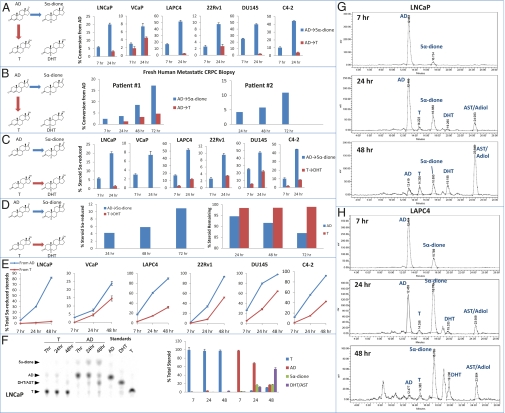Fig. 2.
An alternative pathway to the synthesis of DHT bypasses T. (A) All six human CRPC cell lines uniformly transform AD preferentially to 5α-dione over T by HPLC. (B) Freshly collected metastatic CRPC tissue exhibits similar metabolism from AD→5α-dione. (C) AD is a preferred substrate over T for endogenously expressed SRD5A in CRPC cell lines. (D) In patient #2, AD is readily consumed by 5α-reduction to 5α-dione, whereas there is no detectable 5α-reduction of T to DHT and no depletion of T over time. (E) Accumulation of 5α-reduced steroids occurs more robustly in CRPC cell lines from AD compared with T. In A–E, blue arrows, bars, and lines represent flux through the alternative pathway and red indicates the conventional pathway. (F) Alternative analysis by TLC demonstrates the preference for 5α-reduction of AD. (G) HPLC tracings demonstrate the conversion of AD to 5α-dione in LNCaP at 7 h and subsequent conversion to the other 5α-reduced steroids (DHT, AST, and Adiol). (H) Similar HPLC analysis in LAPC4. Error bars in A, C, E and F represent the SD from experiments performed in triplicate.

